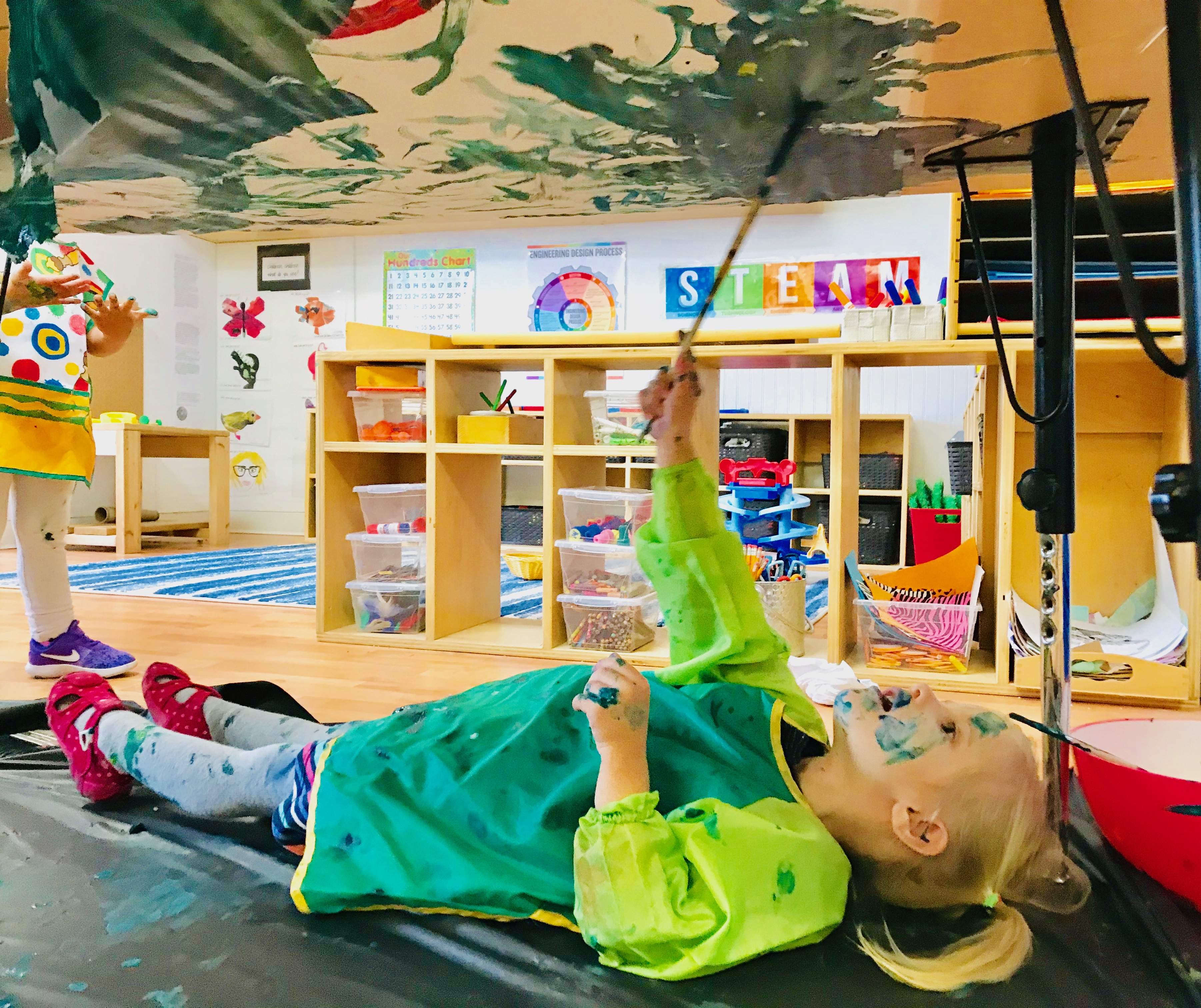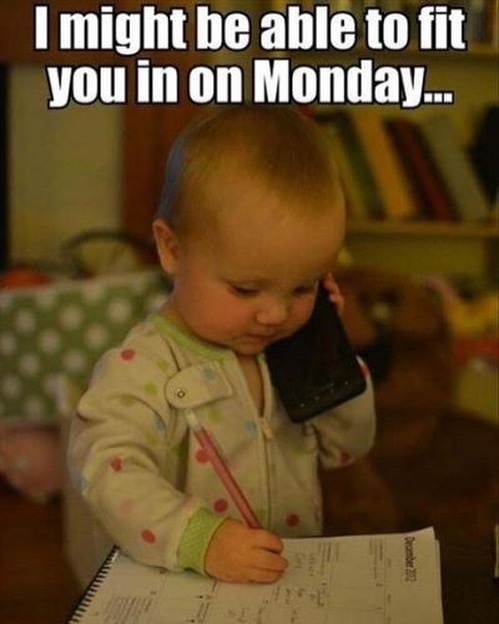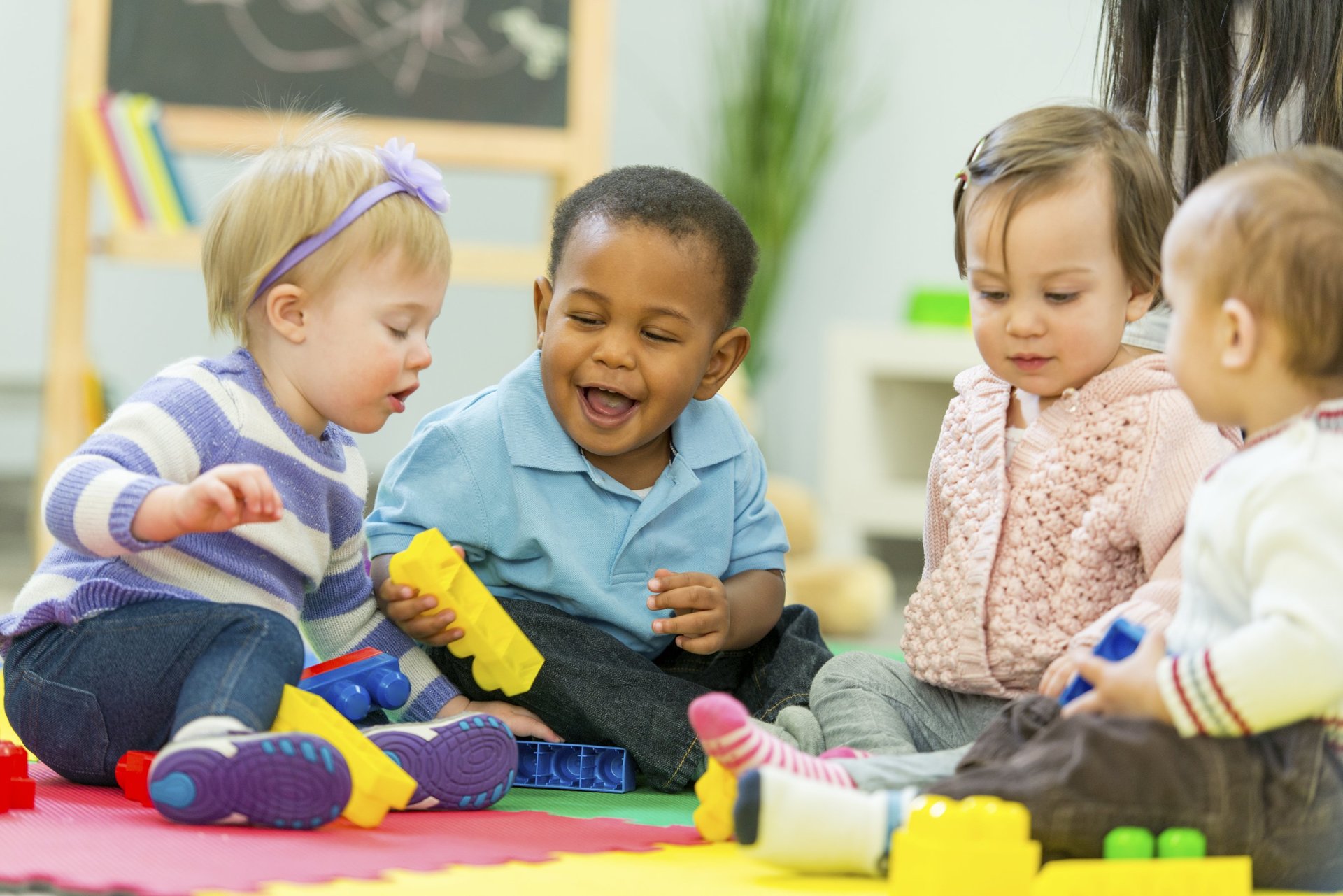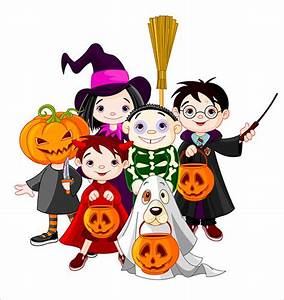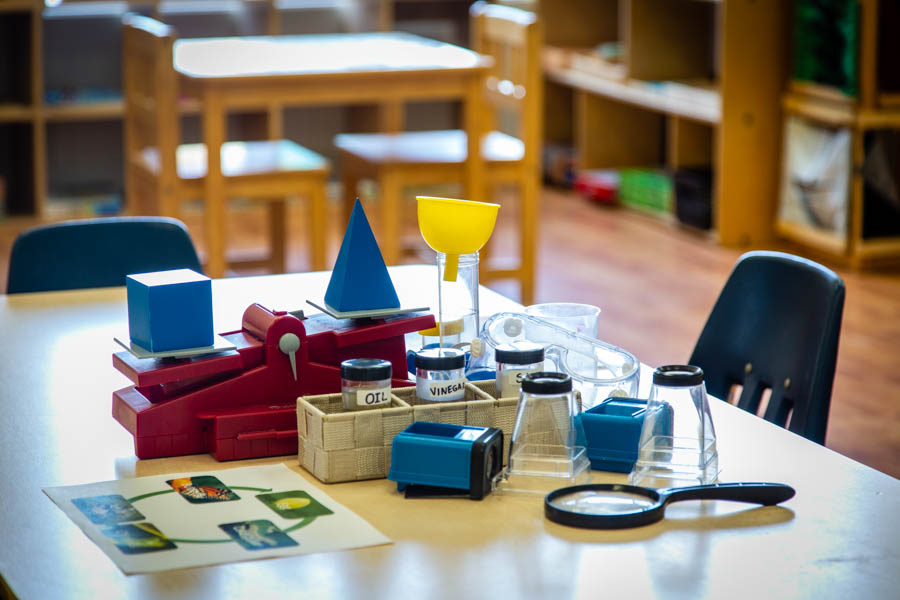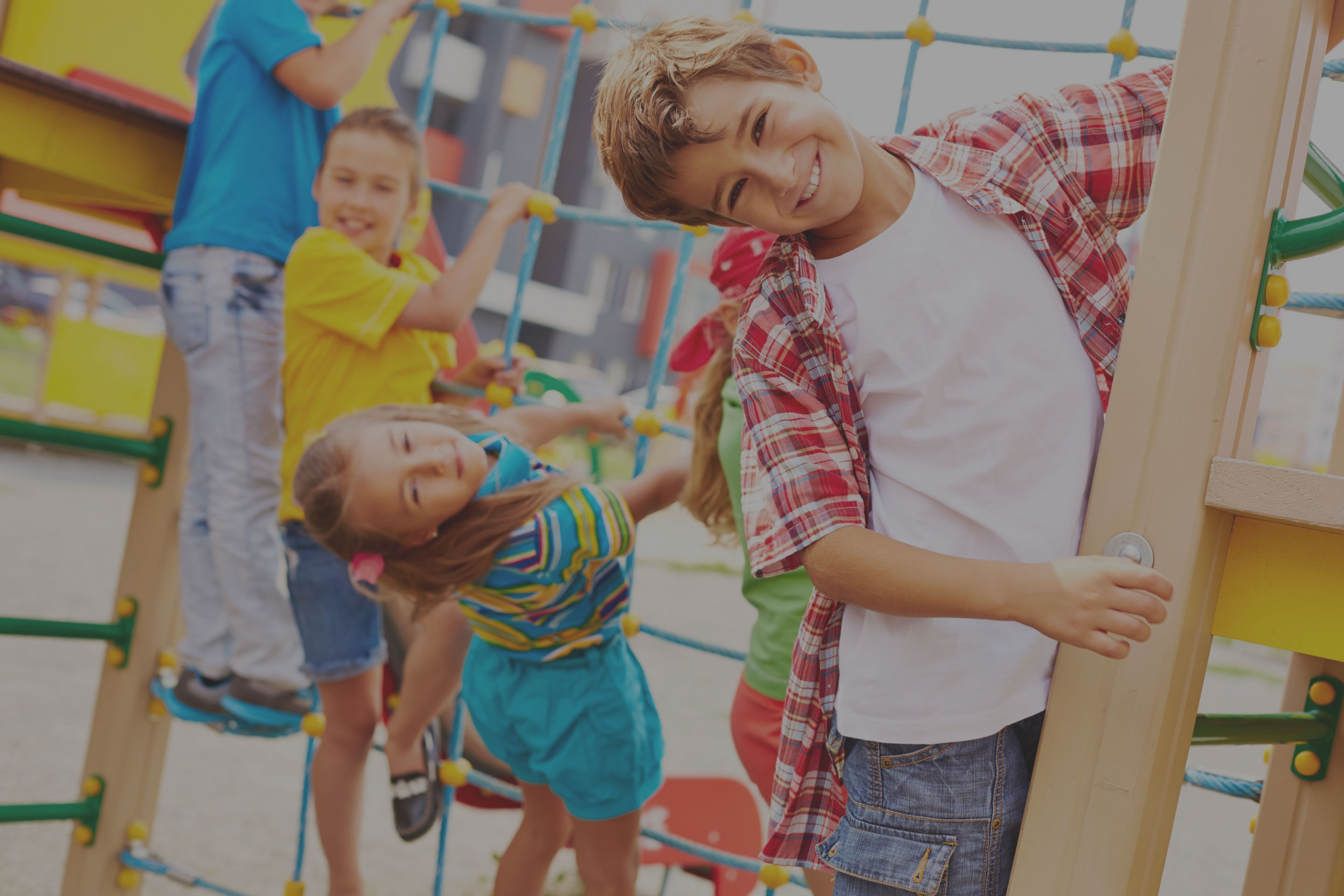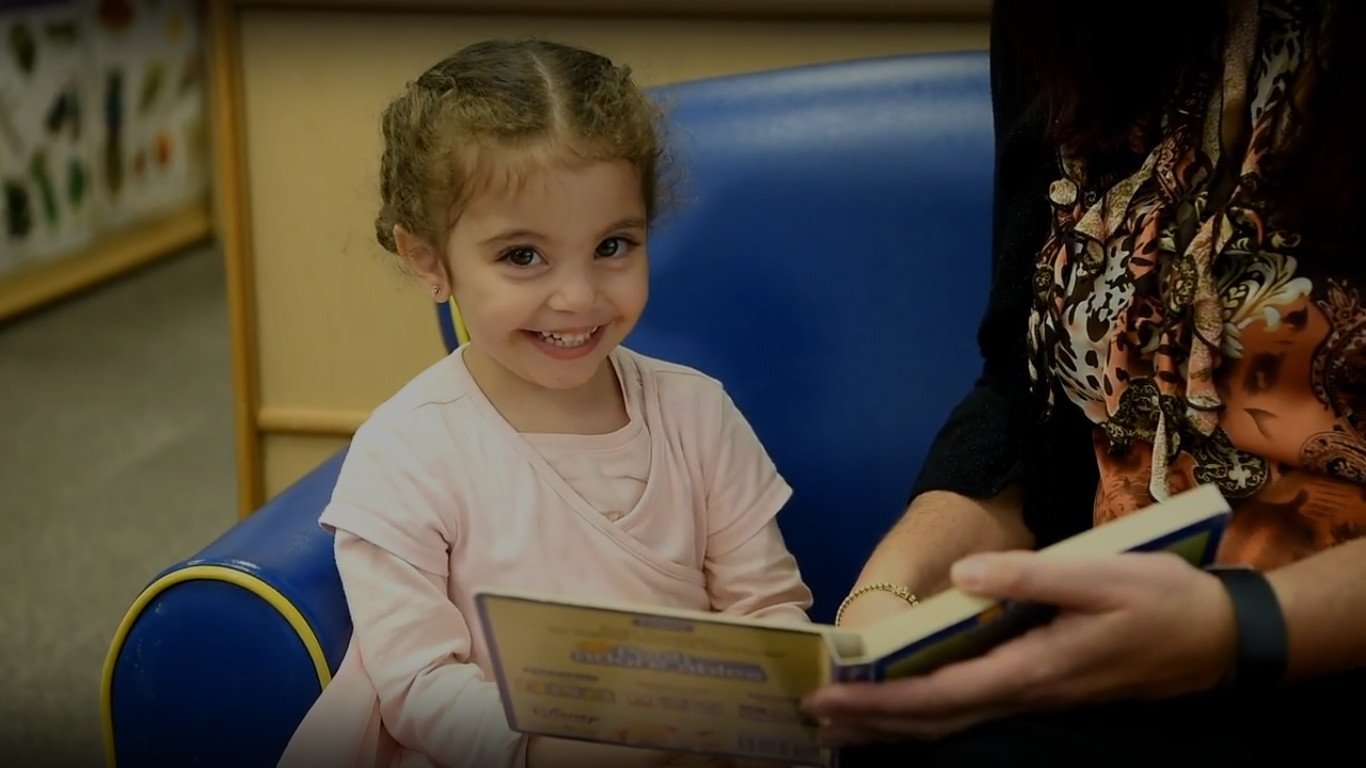A is for Art in STEAM
At Alpha’s Discovery Kids, we understand the importance of educating children using a wholistic approach. Art is a key component of our STEAM (Science, Technology, Engineering, Art and Math) program which is one of our four pillars of learning. We believe that incorporating art into everyday learning is essential. It can encompass science, math, language, engineering and more. Art builds creative skills which are essential to success in all other subject areas. A good scientist, mathematician or engineer must also have creative skills. Art allows children to explore and learn, be creative and use their imagination.
It is important for educators and parents to foster this learning. Art projects can be as simple as a crayon and a piece of paper or as complex as making a nature scene from cutting out pictures and gluing them to paper.
Preschoolers and toddlers do not care about the finished product. They love the creating process, from smearing paint with their fingers on paper to gluing pom poms to a box. It can be hard for parents and educators alike, to sit back and allow the process to happen. We naturally want the sun in the sky and the tree on the ground and not the reverse.
As kids manipulate a paintbrush, their fine motor skills improve. By counting pieces and colors, they learn the basics of math. When children experiment with materials, they dabble in science. Most important perhaps, when kids feel good while they are creating, art helps boost self- confidence. And children who feel able to experiment and to make mistakes feel free to invent new ways of thinking, which extends their learning well beyond the art project.
Art helps children develop their fine motor skills by grasping a pencil or crayon, a paintbrush or chalk. This developing skill will help your child to button their coat or to begin writing. Art activates the critical thinking part of the brain. Children begin to understand that their actions have consequences; if I push harder with the crayon, the colour gets darker. It teaches children to match concepts, like size, shape, they can make comparisons to other items they are using.
What can you do as a parent to build these skills? Having children describe their artwork to you is a great form of communication. It allows them to use their language skills as they process what they have made. You can assist them in learning new words as you ask them questions about their project. Giving children a creative outlet allows them to relieve stress and work through things happening in their lives. Encouraging children to be artistic and express themselves helps facilitate learning and self-esteem.
It is hard as adults not to draw for our children. Instead of drawing your own version of a tree besides theirs, try copying them. Draw the same picture as they are. Make big scribbles, draw big lines and small lines. If children are focused on what the adult is drawing, it takes away from their artwork.
Think about this, if you were at an event and you were told what to wear, how to sit, what to drink, what to eat and how to dance, would it be enjoyable? Ensure that you are giving children choices. Let them decide the materials they want and how and when they want to use them. You have to be prepared for a mess. Have the proper area available and let your child explore. It is okay if they peel the paper off the crayon and roll it along the paper. It’s okay if you provided a paintbrush and they use their fingers. Always focus on the process and not the product. Let them know they are doing a great job and that you love their artwork. Your voice
will always be your child’s inner voice.
Art is about letting it go. As long as your child is safe (i.e. Not running with scissors), let them
explore. This may involve letting them sharpen the pencil crayon for 15 minutes or 15 times
during a 20-minute experience, but children learn best through play and exploration.
Visit our curriculum page for more information about how we incorporate art into our four pillars of learning through STEAM curriculum. We have truly developed an exceptional program that focuses on the child as a whole. We believe that language, literacy, STEAM and mindfulness can provide children a path for continuous growth.
Fun holiday activities to do with your kids
Holiday fun for the whole family
Holiday fun for the whole family by Nichole Folino
Holiday fun for the whole family – At this time of year, parents spend so much time wondering what to get their children, did they buy enough presents? Will they like what we got them? We spend countless days asking them for a list of what they want, only to have to divide it amongst family members.
I can tell you as an RECE who has worked with children from 0 to 12, that it isn’t the presents the kids talk about all year. Yes, they may tell us some of the gifts they got but for the most part, it is of the time they spent with family.
They tell us stories of how grandpa fell asleep after dinner and was snoring, they tell us stories of waking up as a family and having breakfast together, they talk about going to the movies, making crafts and the quality time spent together.
Here are some great and easy ideas that you can do as a family over the holidays.
1. Family handprint Christmas tree
a. Green construction paper for the hands
b. Brown construction paper for the tree base
c. Yellow construction paper for the star
Trace everyone’s hands and cut them out. Place the largest ones on the bottom and work up to the smallest hands on top.,
2. Clear ornament balls
a. Purchase clear round ornaments that open from the dollar store
b. Place anything inside of them (glitter, pom poms, photographs, acorns, pine needles, fake
snow.
c. Hang them on the tree
3. Cinnamon stick reindeer
a. Purchase cinnamon sticks from the grocery store or bulk store
b. Glue them together in the shape of an A and then turn it upside down
c. Place eyes just under the horizontal stick (either googly eyes or you can draw them with
marker)
d. Glue a red or black pom pom on the bottom to make the nose
e. Attach a string to hand them on the tree
4. Christmas Playdough
a. 1 tablespoon cooking oil
b. Food colouring (gel is the best to use for vibrate colours)(red or green)
c. 1 cup of water
d. 2 tsp on cream of tatar
e. 1 cup of plain flour
f. 1⁄2 cup of salt
g. You could add a teaspoon of vanilla extract, gingerbread extract or peppermint extract to
give the playdough a holiday smell.
5. Santa Limbo is a great and fun game to play with the whole family. Have participants put a “Santa belly” under their shirt using a pillow. Place a limbo stick or you can use rope at a starting height. Then have everyone line up and one by one try to limbo underneath (with the Santa belly) until everyone has tried. Slightly lower the stick and have those who made it go again. Continually lower the stick until there is a winner.
The holidays are about family and making memories. Presents only last for a short time until the children move on to something else. Use this time to have fun, get closer and give them the gift that money can’t buy, your time.
Thanks For Reading Holiday Fun For The Whole Family
Thanks for reading Holiday Fun For The Whole Family. If you have any questions about Alpha’s Discovery Preschool & Daycare, in either Mississauga or Oakville, feel free to contact us at any time.
Technology in childcare: Using it wisely
Technology in childcare: Using it wisely
At a very young age children are developing a sense of initiative and creativity. They become curious about the world around them and how things work. At Alpha’s Discovery Kids Preschool and Daycare, we understand the importance of educating children in all areas to help them grow and develop.
Technology is one of the key programs that we focus on in our Four Pillars of Learning Curriculum. It is the second letter in the STEAM program. Digital technologies provide an outlet for them to demonstrate their ability to explore and learn. It is important to use developmentally appropriate interactive technology that is designed to enhance feelings of success.
Capturing photos of block buildings or artwork that children have created or videotape dramatic play to replay for children, allows them to look back on their accomplishments and re-tell stories of events that have happened in their classroom.
Technology plays a positive role in children’s development and learning. With the help of technology, teachers have access to more innovative and improved teaching methods that allow them to promote learning and create an active learning environment for children. It is very important to ensure safety when using technology with children. Teachers support their growth by following the children’s lead. For example, if the children are talking about bears, a teacher can use technology to show the children where different bears live, the types of food they eat or how much they weigh.
Children under 5 years old have been raised with technology and they are familiar with it from a very early age. Have you ever handed your child an iPad or your phone and watched them magically move through the screens with ease? Sometimes our children seem more capable of using technology then we do.
We understand why some parents may have concern about their child being introduced to technology at school when it surrounds them so much at home. We know that some parents are concerned about the negative effects of “too much screen time”. While we understand their concerns, we also know that when technology is used wisely to enhance learning, it can assist in achieving the learning goals set out by the program. Allowing technology in the classroom can encourage more opportunities for students of varying ages and abilities to engage, communicate, and explore.
It is important to understand that the goal of technology use in the classroom is to support collaborative learning environments and, therefore, enrich student’s interactions with their peers. It is important for teachers to be there to know when it is an appropriate time to introduce technology into a lesson or activity.
With technology children can reach places they may never see, the galaxy, the jungle, mars and more. They can visit all of these places in a safe environment with the support of the Early Childhood Educator. Preschoolers can take more control of their learning and expand their own horizons. They can learn about things that interest them and build on their own understandings.
Technology can also be a way to create more structure and focus in a classroom that may be busy with energetic preschoolers. Simple things like playing music in the classroom for nap time, music and movement time, yoga and relaxation can be a great way to calm a room and provide for some focused activities. Technology tools also support the ways educators measure and record development, document growth, plan activities, and share information with parents. At Alpha’s Discovery Kids, we use HiMama to communicate with parents so that they are always aware of what is going on with their child in the classroom.
It is how we use technology that makes the difference. If we use it wisely, in a positive and educational way both at home and in the classroom, we can teach children valuable skills. There is no doubt that children need to be able to use technology to be successful in the future. We think it’s important to prepare them to be successful.
We strongly believe in supporting children in all areas of their growth and development. Visit our curriculum page for more information about how we incorporate technology into our four pillars of learning through STEAM curriculum. We have truly developed an exceptional program that focuses on the child from a wholistic approach. We believe that language/literacy, STEAM, physical activity and mindfulness can provide children a path for continuous growth.
Why choose part-time daycare or preschool?
Why choose part-time daycare or preschool?
by Nichole Folino
As an early childhood educator, I see the impact that daycare or preschool has on children every day. I see them grow and develop, make friendships and become more social. I know that as a parent, it can be hard to justify sending your child to daycare or preschool when you are home with them or have family watching them. I can tell you that nothing has the same impact as the social aspects that are learned in a group environment such as daycare or preschool. It is clear to see the difference in the development of a child that has been to daycare and one that has not.
Developing social skills is very important for young children. Social interaction helps to build a child’s sense of self, and also helps children to learn what is expected of them. By playing and interacting with other children, they learn skills that will last their lifetime. If you look back to when you were younger, do you remember your childhood friends? Do you remember if they were kind or if they hurt your feelings? Most of us could easily answer yes to those questions.
During our childhood, the people that we interacted with helped to shape the adults we are today. Daycare and preschool are the beginning stages of that. Children make new friends, learn to feel accepted, learn to play cooperatively and be respectful to others. It is so important that at a young age, children learn how to build positive relationships with other children their age. Children who have poor socialization skills can struggle to develop close bonds with those around them, making it hard to build strong relationships with people later in life.
In a daycare or preschool environment, children learn how to share, take turns, set boundaries and problem-solve. Children even begin to develop empathy. They can tell when their friends are happy or sad, hurt or angry. Children begin to understand how to manage their behaviour as well as experience consequences for their behaviour. As children grow and develop, they begin to pick up on what behaviours and reactions are appropriate and which ones are not.
In addition to the many social benefits associated with being in a daycare or preschool, children at Alpha’s Discovery Kids also experience numerous other benefits including:
- Learning to follow a routine
- Structured learning environment
- “The Four Pillars of Learning” Educational curriculum designed to teach young children
- Potty-training
- Parenting tips and advice from trained early childhood educators
Childcare is a great way to begin to prepare your child for the large world that lies ahead of them. For more information about our part-time program options, visit our Programs.
Halloween: Tips to prepare your toddler or preschool child
Halloween: Tips to prepare your toddler or preschool child to be safe and have fun!
By Nichole Folino
Halloween can be an exciting and scary time for children. For most of their lives we have told them not to talk to strangers and now here we are sending them up to peoples houses that they don’t know and telling them to take candy from them. How can we as parents make sure that our children feel safe and have fun on Halloween night?
It is important to be honest and prepare your child in advance, even if they aren’t having anxiety. Talk to them about what the night will be like, let them know that they are safe and okay with you. Ask them what they are excited about and help them with any fears they may have. It is important that they realize that there might be scary costumes and that it is only a person underneath that.
Here are 5 tips to ensure success on Halloween.
1. For young children, it is best to avoid masks, which can be scary and also difficult to see from. We recommend using non-toxic face paint to complete their costume if needed.
2. Purchase costumes in light coloured material if possible which will help drivers to see your child on a busy street. For darker costumes, you can add reflectors to the front and back of the costume.
3. Your child’s costume should fit properly to ensure they do not trip and fall. They will be going up and down stairs quite a bit, so ensure they can move freely.
4. It is important to remember that some candy given out on Halloween can be a choking hazard for young children. Also, be sure to check it for anything that may have open wrapping or looks like it has been tampered with.
5. If you have friends who live in the area with children, it is great to invite them to join you. This could help with any anxiety your child could be facing. It’s always fun to go trick-or-treating in a group.
If you still feel that going out trick or treating may not be the best for your child, you can always look into events in your community. Check out the local mall, the library, a community centre or even consider hosting your own party and inviting friends. There are many daytime events at indoor playgrounds in the area that host Halloween parties for young children.
At Alpha’s Discovery Kids, the toddler and preschool children get to experience trick or treating indoors, and some of them for the first time! We put on costumes and each class visits all the other classes to trick or treat. The day continues with fun Halloween activities. For information about our programs, contact us.
STEAM – How to Foster a Love for Science Discovery in Young Children
At Alpha’s Discovery Kids Preschool and Daycare, we understand the importance of educating children in all areas to help them to grow and develop. Science is one of the key programs that we focus on in our Four Pillars of Learning curriculum. It is the first letter in our STEAM program. Science can be a hard area for some of us to wrap our heads around, especially as adults. We think of volcanos and osmosis when we think of science, but if you look at the activities your child does in their day, science is everywhere.
By introducing science to children at a young age, we begin to foster their interest in the subject and their success in that subject at school. It helps them to problem solve and better understand their world around them. Science allows children to make predictions, complete observations and determine an outcome. Science easily links with many other parts of our program such as math and art. For example, we discuss the types of animals in the arctic and the temperature (math), and have them create puppets from paper bags (art).
Science is also a great way to calm children. If negative behaviours are happening at home or at school try using art and science as a way to alleviate some of those issues. Children generally love exploring with science, they love the mess, and the use of imagination. Simply mixing colours is a great way to show children science. Ask them what they would get if they mixed red and blue, blue and yellow or red and yellow. Have them try mixing their own colours to see how many different colours can be made.
Children want to be involved. Science can be simple at home as well. You can grow a garden or flowers. Allow them to help put in the soil, to water the plants. Make a graph of how tall it is getting. Show them how you can cook with what you grow. Cooking can involve both math and science by measuring and mixing ingredients to make something new. All these things are simple and will help your child to be excited about learning.
Here’s a list of some great simple science experiments that we do with the children in our programs that you can try at home.
1. Lava lamp. Take a water bottle and fill it with the following ingredients.
a. Water
b. Oil
c. Food colouring
2. Colour changing flowers. Put the flowers in a glass with water and food colouring and watch the flowers change colours.
a. White carnations
b. Glasses
c. Water
d. Food colouring
3. Magic milk (one of my favourites). Mix all the ingredients on a tray. Watch what happens.
a. A large flat tray
b. Milk
c. Liquid food colouring
d. Dish soap
e. Cotton swabs
4. Painting on ice cubes.
a. A piece of ice
b. Paint
c. Tray to collect the water as it melts
All of these simple activities can be found online on Pinterest and in Youtube videos. They are simple and easy to do and you may find your child asking to do them over and over again. With any science experiment it is important to ask questions.
1. What do you think will happen? – Make a prediction.
2. What actually happened? – Observe the results.
3. Why/How did it happen? – Make a hypothesis to explain what happened. You may need to do some research with your child to explain why or how it happened.
It is always fascinating to make observations about what your child was able to understand. Then 6 months later do the same activity. You will be amazed at how much more your child is aware of and the questions they ask. Now get out there and have fun.
Visit our curriculum page for more information about how we incorporate science into our four pillars of learning through the STEAM curriculum. We have truly developed an exceptional program that focuses on the child as a whole. We believe that language, literacy, STEAM and mindfulness can provide children a path for continuous growth.
How To Transition From Home to Daycare
How To Transition from Home to Daycare
How To Transition from Home to Daycare by Nichole Folino, RECE
Having been in the childcare industry for almost 20 years, I can tell you honestly that enrolling your child into a quality childcare facility, is truly one of the best things that you can do for them. Is it scary for you and them? Yes, of course, but the experience they will have there is invaluable. Childcare teaches them sharing, patience, teamwork, empathy and so much more. It was always easy to stand in a kindergarten classroom and tell which children had been in childcare and which had not.
There are important steps that you can take when deciding to put your child into a childcare program. First and foremost, make sure you feel comfortable there. After taking a tour of the facility make sure you understand and agree with their values, ask questions and feel confident in your decision. Those few things will help to ease some of the anxiety that you will feel.
When it comes to helping your child adjust and be prepared for the first time in childcare, there are many things that you can do.
1. Transition together
Most childcare centres have a transition period to some degree. Take advantage of it. Spend time with your child in their classroom and with the teachers. This will help you and your child to feel comfortable while they explore the new environment. If you feel that your child may need additional transition time, don’t be afraid to speak to the supervisor.
2. Be Honest
Be honest with them about what to expect during their time there. Give them examples like, when you get to school you will see Ms. Jones, then you will play inside with the toys, then you will go outside on the playground, have lunch, a nap and finally you will have another snack before I pick you up. Setting realistic timelines for your child will help them understand their day and when to expect you.
3. Drive by the Centre
When driving by the childcare centre, point it out to your child. Remind them that they will be going there and provide them with days. You can say, in two days you will get to go and see Ms. Jones. It is important to speak fondly of the teacher and the childcare.
4. Say Goodbye
Lastly, but almost the most important is that you say a quick and confident goodbye to your child. Saying goodbye with confidence shows your child that they are safe. Most children will stop crying shortly after their parents leave. If you are concerned, you can also call the centre and find out how they are doing. Sending a comfort toy from home, whether it be a blanket or stuffed animal can help.
As a mother, I firmly believe that one of the best things I did for my children, was to put them in childcare. I believe it helped them to be prepared for the school system in ways I couldn’t have imagined. They were confident and not scared to leave me the first day of Kindergarten. It was me that cried when they went inside. It provided them a social experience that I could not have given them. They made friends easier and knew how to take turns. They were creative and could express themselves in healthy ways. Finding childcare is easy, finding a childcare that aligns with your vision is rewarding.
Conclusion: How To Transition From Home to Daycare
At Alpha’s Discovery Kids, we offer three free transition days prior to starting full-time to help you and the child adjust to our program and routine. If you would like more information about our centre, click here to book a tour.
Minimize First Day of Kindergarten Jitters
Minimize First Day of Kindergarten Jitters
Minimize First Day of Kindergarten Jitters – By Susie Beghin
Every September a new wave of children is introduced to the Kindergarten classroom. This transition from home or daycare to the elementary school system can be easy and seamless when you take the right steps. There are many things parent and the daycare professionals can do to help ease the transition.
Preparedness for Kindergarten is not about the knowledge your child has—whether they can read, or even if they know their letters or numbers—it’s about how much independence and confidence they have and how well socialized they are. These key skills play a role in how well they might adapt to the classroom. Helping your child develop these characteristics can be accomplished at home and daycare leading up to the first day of school. But how can parents and caregivers do this?
At Alpha’s Discovery Kids we provide our families with a readiness checklist, but parents can develop their own, based on their child’s needs and abilities. There is a consensus amongst experts of five key things you can do to prepare your child for this important life event.
1. Encourage Self-Care
• Teach self-help skills like dressing—learning zippers and buttons, shoes and boots, coats, mittens.
• Teach them how to put things into, and take them out of, a backpack, and how to use all types of lunch containers. Teach them to tidy up their things and keep track of their belongings.
• Ensure your child is capable when addressing their bathroom needs. In Kindergarten they will not get assistance, and this could result in a child being sent home.
2. Follow regular routines
• Make sure there is a consistent bed time that provides your child with enough sleep to ensure they are attentive and productive in the classroom. In general, the consensus is 10 hours a night for Kindergarten-aged child.
• A regular morning routine is also critical. It is recommended you get your child used to waking up at the same time every day, getting dressed and eating breakfast, all with plenty of time before they have to be ready to leave for school without being rushed.
• Build free play time into your daily schedule, both with parent involvement and without. Individual playtime helps develop creativity and allows the child time to decompress without any expectations or influence from others.
• Part of having a routine is having a schedule and keeping it. At home it would be easy to give in if your child wants to dawdle through lunch. A school schedule is much more rigid, and if 30 minutes is allotted for eating, then that’s what they will get. Teach your child to transition from one activity to another when it is time. Continue reading “Minimize First Day of Kindergarten Jitters” below.
3. Encourage Socialization
• Register your kids in parent-free activities. Art classes, dance, and sports are all excellent opportunities to create a sense of independence and comfort. They will learn that their caregivers will always come back for them.
• Participation in team sports is a great way for children to learn cooperation and teamwork, which will really help them in a school setting, both in the classroom and on the playground.
• Children who regularly attend preschool and daycare are automatically socialized due to their group environment and don’t really need other types of group activities until Kindergarten.
4. Develop healthy habits
• Eat healthy foods. Teach your children about the difference between healthy food and treats (sometimes food).
• Start the day off with a healthy breakfast to make your child is alert and ready for learning.
• Drink lots of water to keep the brain and body hydrated to optimize learning. Keep fruit juice as a sometimes food, and minimize soda consumption as much as possible.
• Get plenty of sleep. Experts recommend 10 hours of sleep a night, but if your child needs a nap to recharge when they get home from Kindergarten, especially in the early months, don’t discourage them. If the nap interferes with their ability to get to sleep at night, limit the length of the nap.
• Make sure your child has regular physical examinations and is up to date with their immunizations. Remember, many school systems will suspend attendance if the immunization record is not up to date.
5. Talk to your child about Kindergarten
• Visit the school. Take advantage of all events offered that allow you to bring your child to the school—open houses, Meet the Teacher events, and orientation sessions.
• Travel the route your child will be taking to school, whether they’re walking, driving, or taking the school bus. If you’re walking, learn how long it will take you to get to school, and plan that into your routine. Give your child the opportunity in advance to look at all the interesting things along the route so they will be less distracted when school actually starts. If taking the school bus, drive the route with them so they can develop familiarity with their surroundings and will be able to recognize landmarks when they are nearing their bus stop. Talk about school bus safety—staying seated when the bus is moving, keeping track of their belongings, and only leaving the bus stop with their designated caregiver.
• Take them to the school to play in the playground. Learn some playground games like hopscotch or Four Square so they will not feel lost or overwhelmed during those first few recesses.
• There are some really good books you can borrow from your local library that explore the kindergarten transition. Read them with your child and encourage them to ask questions.
Parents also have expectations of their child when entering Kindergarten, but it’s important to remember that all children reach milestones at different times and not to measure your child against anyone else. It doesn’t matter if your 4 year old can’t read yet. Work with them at home to support their preschool’s efforts, learning letters, numbers, colours, and shapes.
Whether a child has stayed home with parents or other caregivers or has attended a daycare or preschool, there are steps you can take to lessen your child’s anxieties related to starting school. Following these suggestions will help ease the transition into the structured, often overwhelming world of kindergarten. With love and support, everything will be fine for everyone involved.
Thanks for reading: Minimize First Day Of Kindergarten Jitters
Thanks for reading: Minimize First Day of Kindergarten Jitters
10 Language and Literacy Activities You Can Do With Your Child at Home
10 Language and Literacy Activities You Can Do With Your Child at Home
10 Language and Literacy Activities You Can Do With Your Child at Home – By Susie Beghin
Earlier this month, we posted the first in a series of articles highlighting the 4 Pillars of Learning approach we use at Alpha’s Discovery Kids. This two-part article addressed our approach to developing Language and Literacy skills in the children under our care. While the children spend a lot of their time in our centre, it’s important that their language and literacy is nurtured at home as well. In order to help our parents, we have created a list of things they can do at home with their young kids to complement our practices. A lot of these activities do not require scheduled time since they can be done as part of everyday life and should be encouraged amongst all caregivers.
Literacy Activities
- Read aloud with your child: There is a reason experts always recommend reading with your children. It is the most important thing you can do to develop their literacy skills. It helps their brains develop, it improves concentration, and helps create a sense of curiosity about the world around them.
- Use alphabet magnets/stickers/cards to learn letter sounds: It doesn’t matter what order they learn their letters, so start with the ones that are used most often—S A T . Gradually add in other letters, like the letters in their name. Add more as they gain proficiency.
- Play Alphabet Concentration: Write the uppercase and lowercase alphabets on index cards to create a deck of 52 cards. Play concentration, matching the uppercase letter to the lowercase letter. Have the children make the letter sounds as you play.
- Drawing: Learning how to hold a crayon/pencil/marker properly and how to make whatever shapes they want helps children when they start learning how to draw the specific letters of the alphabet. If they draw with confidence, they will write with confidence.
- Go on an Alphabet Walk: Before you go for a walk, choose a letter sound. See how many things you can find that start with that sound while you walk. This will also increase your child’s awareness of their environment and increase their vocabulary.
Language Activities:
- Talk to your child: As with reading to your children to develop literacy skills, talking to your children is one of the most important things you can do to help them develop their language skills. Children whose parents talk to them have larger vocabularies and will use more advanced sentence structures. Use new words (for example, good, yummy, tasty, delicious, etc., to describe food) and ask them if they understand and can explain what the new words mean. Describe your activities as you perform them so they can start making connections to abstract words and ideas.
- Play “I Spy”: It teaches children how to use language to describe the things in their environment. Depending on how you play, it will develop their knowledge of colours and letter sounds, so mix it up and play both ways.
- Create stories using images: Using picture cards, photographs, images cut from magazines, etc., allow your children to create their own narratives. They will use their words to describe what is happening in the story. This helps develop language, teaches them how to project and predict what will happen next, and develops their creative thinking.
- Sing songs: In the car, while out and about is a perfect place to sing songs with your children. Not only is it fun, but it helps pass the time while driving in the car! Children love songs with actions so try to do the actions as you go.
- Play rhyming games: Choose simple words from objects in your environment and see how many rhyming words you and your child can come up with.
As you can see, these are all simple activities that don’t take up a lot of time. Some of them can effortlessly be incorporated into your everyday life. Older siblings and extended family members can easily participate. A person’s brain is at peak ability to learn language between the ages of 1-6 years, so the efforts invested in developing your child’s language and literacy skills now will pay off in their ability to communicate in the future. And that’s 10 Language and Literacy Activities You Can Do With Your Child at Home.
Thanks for reading 10 Language and Literacy Activities You Can Do With Your Child at Home, by Susie Beghin
The Importance of Language and Literacy for Children in Daycare – Part 2
The Importance of Language and Literacy for Children in Daycare – Part 2
The Importance of Language and Literacy for Children in Daycare – Part 2 by Susie Beghin
Language and Literacy is key part of the 4 Pillars of Learning at Alpha’s Discovery Kids Preschool and Daycare, with locations in Mississauga and Oakville. This month, we will continue to examine Language and Literacy for children in daycare and provide tips on how parents can incorporate the curriculum in their own homes.
How to Foster a Love of Reading
The benefits of phonological learning in preschoolers is widely accepted by educators and child development experts. As part of our Language and Literacy Program, we utilize the highly successful Jolly Phonics literacy program. We focus on first learning letter sounds, not names, and rather than following the traditionally accepted alphabet sequence, we start with the most common letter sounds. The first ones we concentrate on are S A T, the common letter sounds in the English language. We sing songs to help develop association with the letter sounds, and then progress through the rest of the alphabet in a similar fashion. Once the sense of the letter sounds is developed, we learn the letter names. This approach encourages early reading in a fun way, and early reading helps develop literacy skills.
There are several ways we approach reading in the daycare and preschool environment. There are two types of reading activity: Interactive Reading and Dialogic Reading. Interactive Reading itself then takes two approaches. The first approach is the traditional storyteller format—an adult or older child reads to a child or group of children. The children listen and observe, but do not actively participate in the storytelling itself. In the second approach, the adult prompts the child or children with questions like “What do you think will happen next?” The children are encouraged to fully participate in the storytelling experience by asking questions, or making statements related to the narrative and their understanding of it. This type of reading encourages reading comprehension, projection, big picture thinking, and creativity.
Dialogic Reading, on the other hand, puts the child in charge or the narrative. The child tells the story to an adult or other children, either by reading or reciting from memory, or creates a story entirely their own by interpreting the pictures in a book in their own way. This creative interpretation puts the child in charge, encourages creativity, and develops language and vocabulary skills. This approach requires a lot of patience as the child will tell the story in their own way and we should refrain from correcting them as they tell the story.
Children’s Choice is Best
When reading we let the children choose the books they want to hear or read, because if the book is not interesting to them, they won’t engage. Reading won’t be fun, it will be a chore, or worse, a punishment. If a child is starting to read on their own, we let them go at their own pace, not rushing them along. When they make a mistake on a word, a correction is gently made to help them remember for next time, but it does not become the focus of the activity.
These are just some of the ways we incorporate Language and Literacy skills in our classrooms to help your children thrive. Stay tuned for our next blog post, where we will provide you with ways you can continue and enhance your child’s Language and Literacy development at home. If you want further information about our 4 Pillars of Learning click on the Curriculum page.
Thanks for reading The Importance of Language and Literacy for Children in Daycare – Part 2

